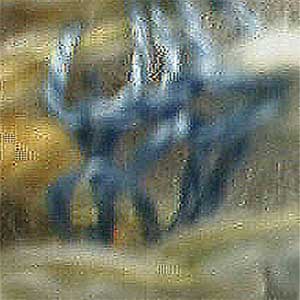Topological Presence:


This work explores the possibility of discovering relationships that occur when pursuing the process of producing 3 dimensional knitted constructions. Is there a link between a constructed object that displaces space and exhibits haptic properties in the real world and an object that may be a composite of compossibilities re-constructed in a virtual world of multiple realities. The notion of compossibilities is explored within the parameters of Digital Media to mark the notion of time operating inside this linkage, as a perception of time passing, time present and what would be the possibility of layering this with a projection of time to come
I am interested in notions of space and reality
The interrelationship between the conceptual, the virtual and the real processes will trigger new connections and result in the production of a series of both still and moving visual installations.
This image interrogates implementation of a knitted textile strategy. The work then interacts with the process of Digital Recording, charting and re-evaluation of process and development.
Digital Art can provide a platform for exhibiting the element of compossibility [the potential existence of a multiplicity of possibilities within a singular unit] with regard to the production of knitted substrates.
By the exploration and mapping of the relationships between three areas; making manipulating and representation the potential for the existence of compossibility within the knitted structures may be revealed. Additionally connections may be discovered between Digital Art, Machine Knitting and Origami, the Japanese art of paper folding.
Through the analysis and interpretation of the process of construction and manipulation additionally using Computer Technology, in conjunction with various peripherals I hope to resolve this question and to be able to exhibit the option of a multiplicity of possibilities within the one. This investigation will be informed by the notions of Deleuze and Guattari. (Deleuze.1993, and Deleuze & Guattari. 1984 and 1988)
The single thread of yarn that contributes to the construction of the knitted substrate does not always progress along a strict sequential trajectory, but winds in and out, folds and twists back upon itself, doubling up and achieving contortions that result in involuted convolutions of folding interleaved planes. The strand can be discontinued in one place and re-attached in another. More than one strand can contribute to the final piece. This development is not linear, but rhizomatic and is contrary to the Cartesian logic of linear structure. Rhizomatic growth mimics that of the potato. In other words, the growth spreads laterally rather than emulating the growth of trees, as hierarchical with a strong central root and branches emanating from the central stem.



